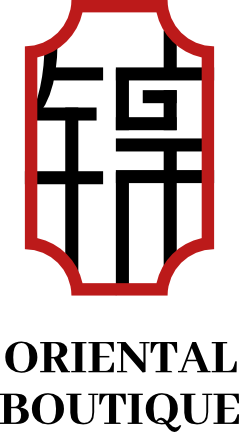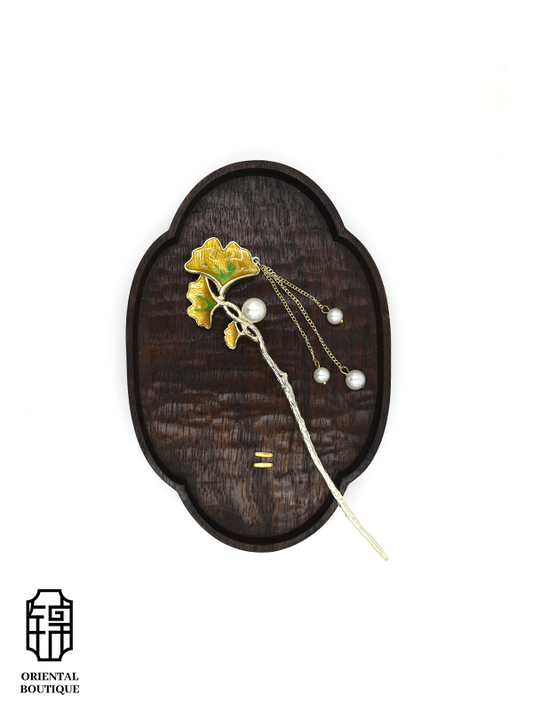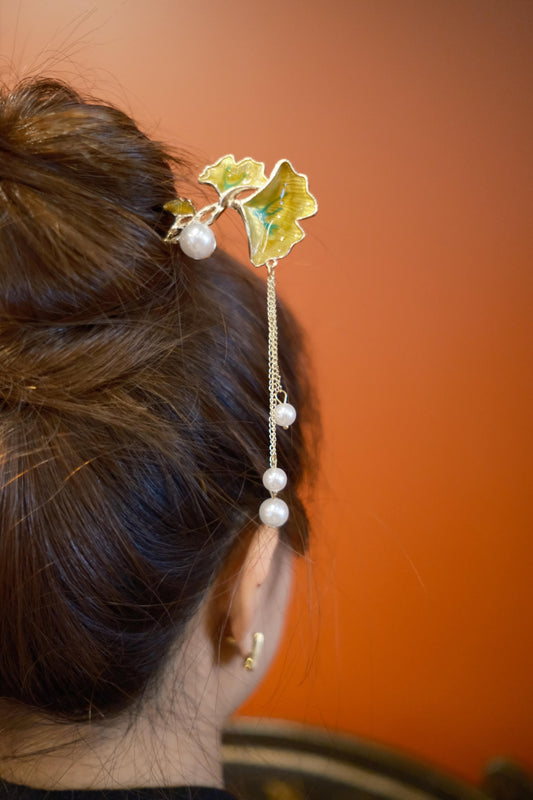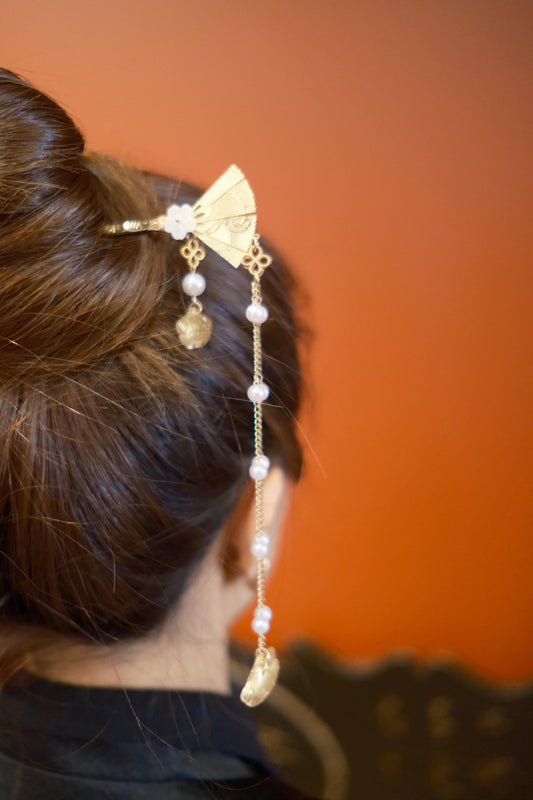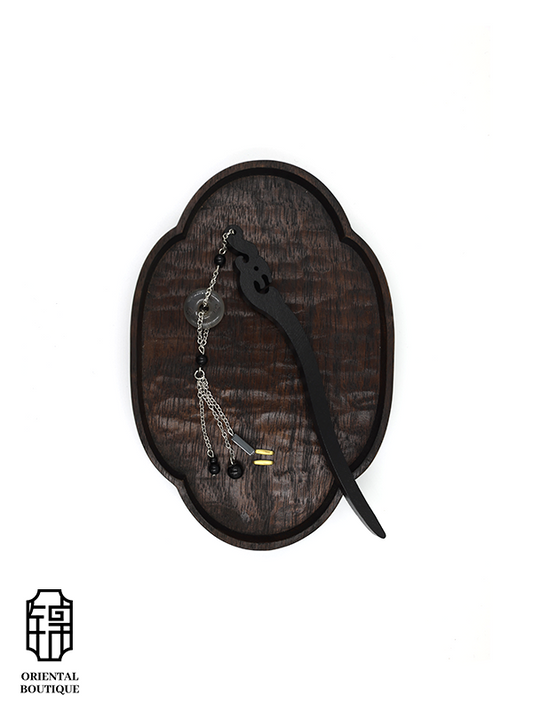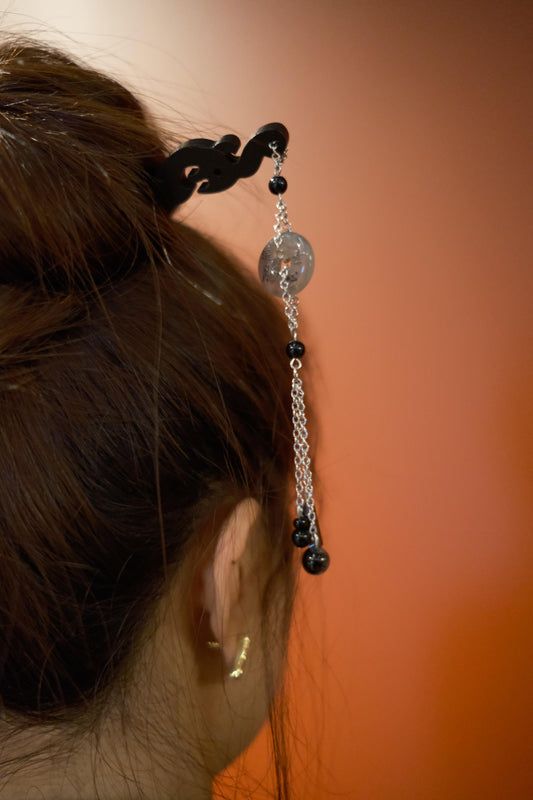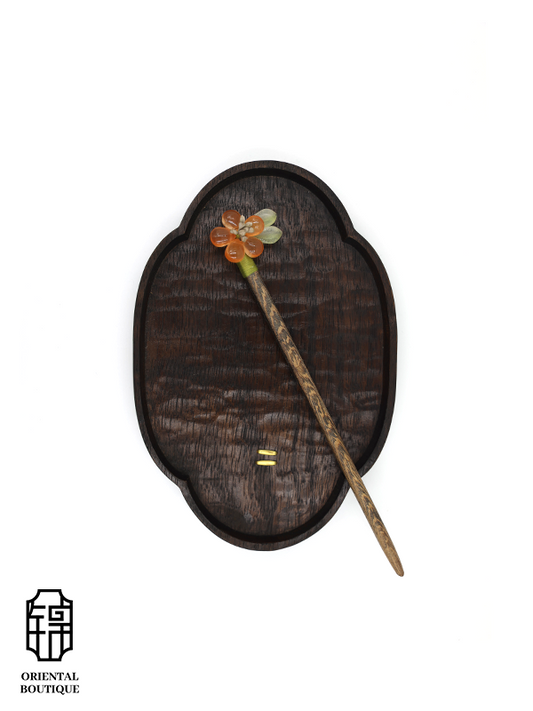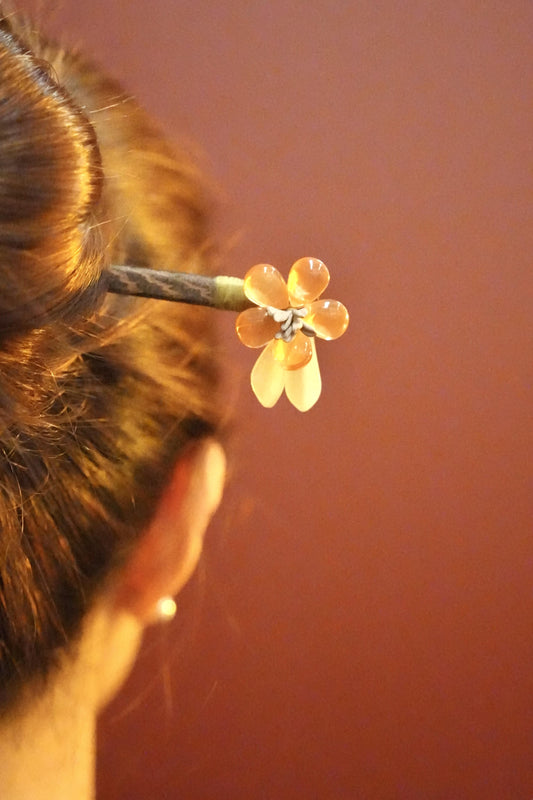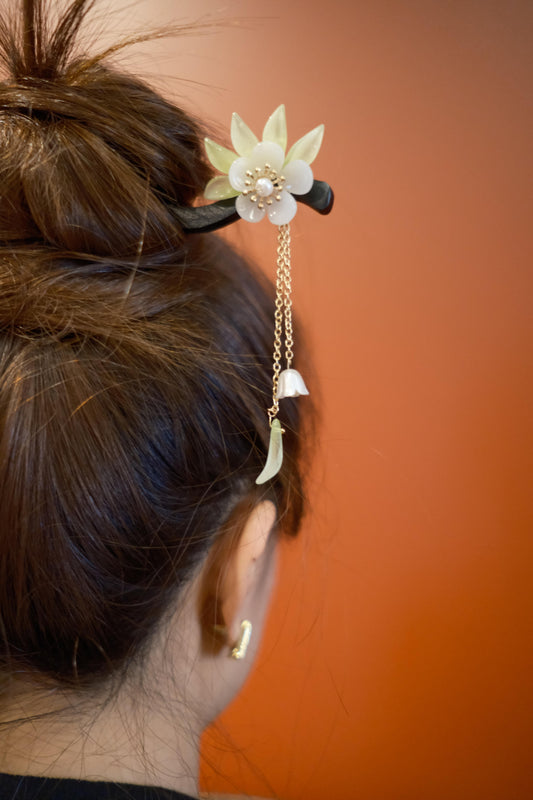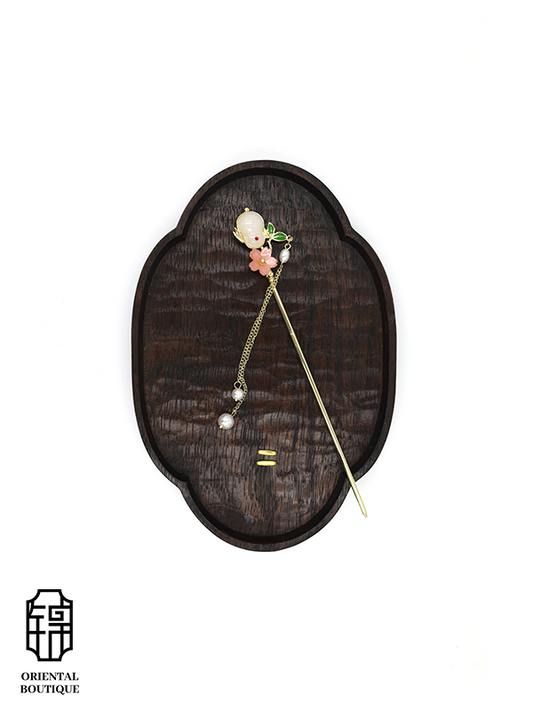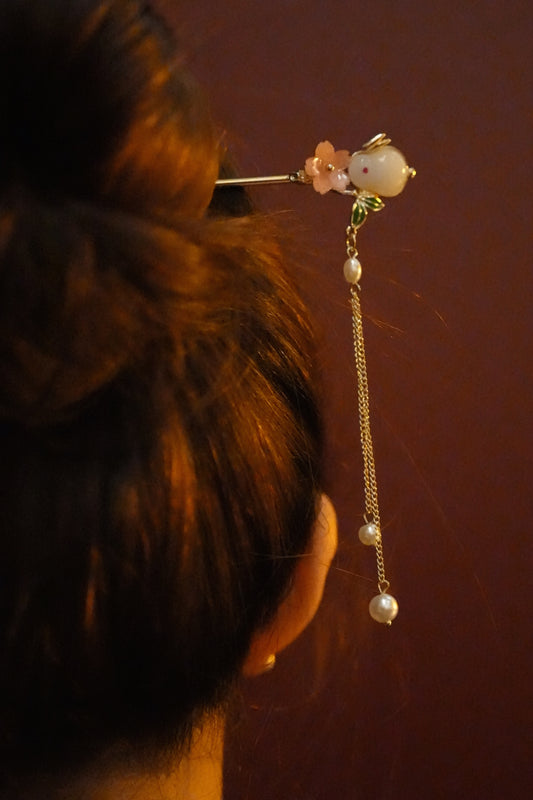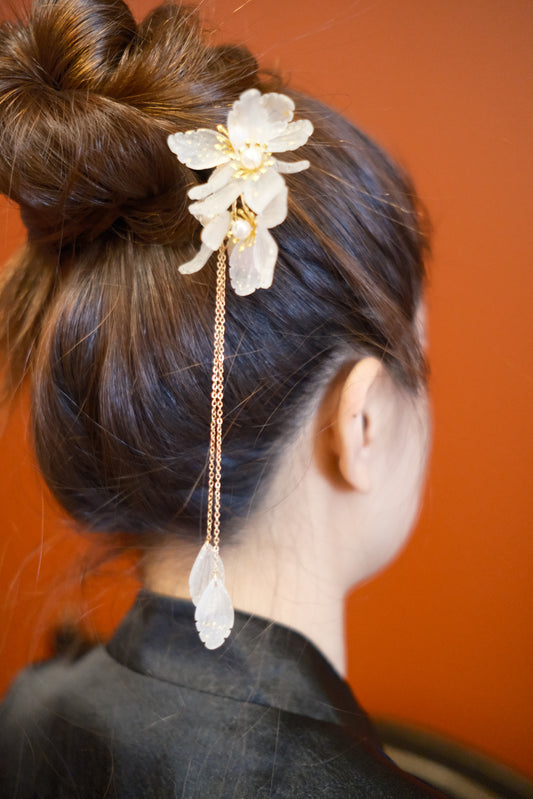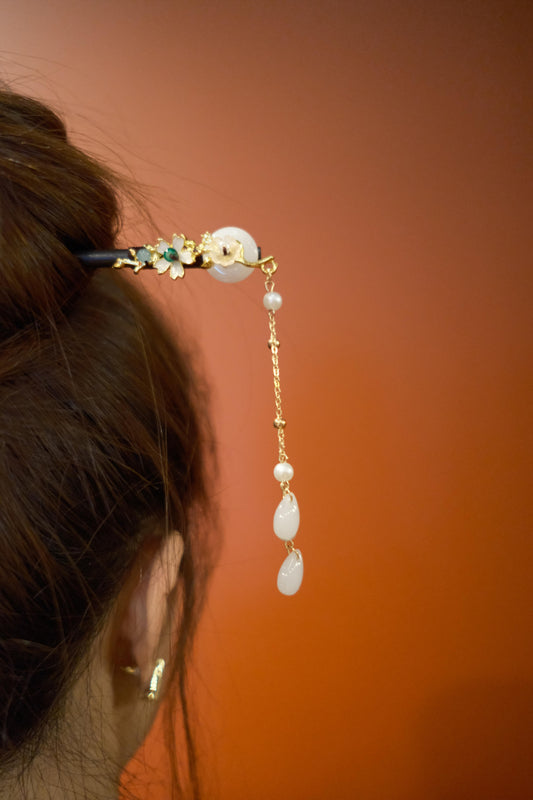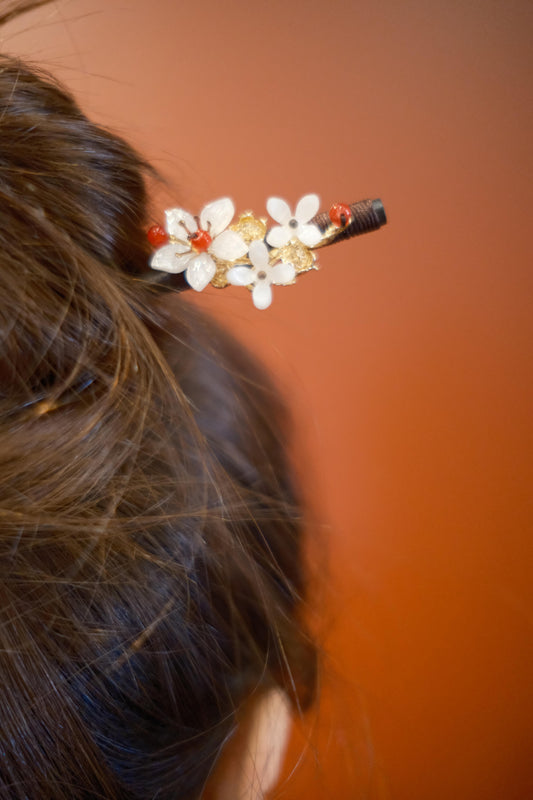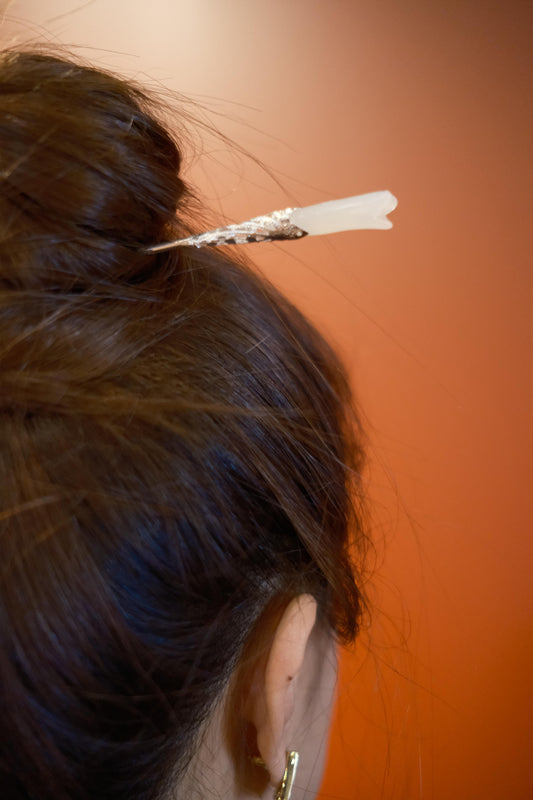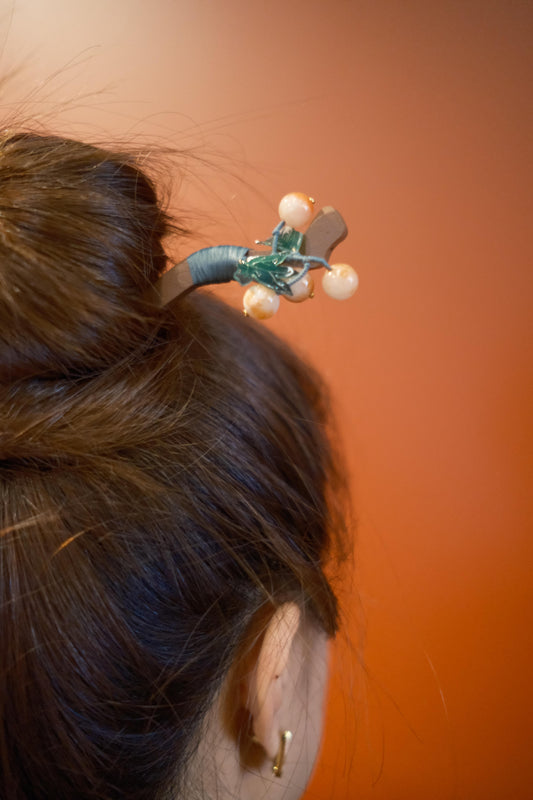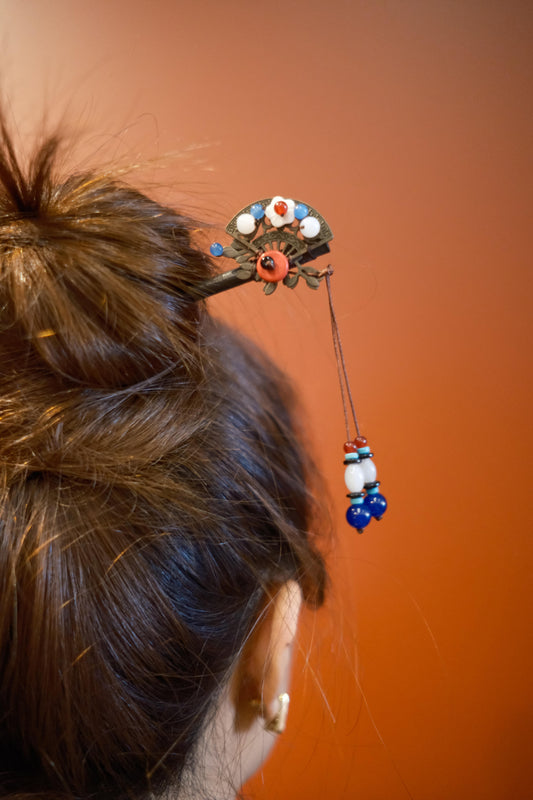Hairpins
Chinese hairpins, known as "ji" (簪), have a rich history that dates back thousands of years, with their use spanning the various dynasties of China, from the ancient Zhou Dynasty to the Qing Dynasty. These hairpins were not only practical tools for securing hairstyles but also served as symbols of social status, beauty, and cultural identity.
History of Chinese Hairpins
Hairpins were initially made from materials like wood, bone, and jade. Over time, artisans began crafting them from more luxurious materials such as gold, silver, and ivory, often decorated with intricate carvings and embedded with precious stones. During the Tang Dynasty, for example, hairpins became elaborate, incorporating motifs of birds, flowers, and mythical creatures, reflecting the era's cultural vibrancy and fashion.
In traditional Chinese society, a woman’s hairstyle and the types of hairpins she wore indicated her age, marital status, and even her social class. For example, unmarried women typically wore simpler hairpins, while married women wore more elaborate designs. In the imperial courts, high-ranking women often wore hairpins made of precious materials, sometimes adorned with pearls, jade, or gold filigree.
Hairpins were also used in ceremonial rituals and as part of elaborate hairdos, especially during festivals, weddings, and other important occasions. Many historical figures, such as Empress Dowager Cixi of the Qing Dynasty, were known for their ornate hair accessories, which were closely tied to their overall elegance and influence.
The hairpin's symbolism goes beyond beauty—its use reflects a deep connection to Chinese history, culture, and the nuances of gender and social status. Today, these accessories are not only appreciated for their historical significance but also for their unique and timeless appeal in both traditional and contemporary fashion.
How To Use?
- Preparing the Hair: Chinese hairpins are typically used in conjunction with more intricate updos. Begin by gathering your hair into a bun, chignon, or twist, depending on the style you're going for.
- Inserting the Hairpin: After securing your hairstyle with pins or other fasteners, use the Chinese hairpin to add decoration and additional support. Slide the hairpin into your hairstyle at a slight angle, ensuring it goes through the layers of hair to hold everything in place.
- Positioning: If you’re aiming for a more traditional look, position the hairpin at the side or back of the head, with the decorative end facing outward. The larger, decorative side can be placed above or below the bun for aesthetic balance.
- Decorative Use: Chinese hairpins are often used to accentuate the beauty of a woman’s hair and to symbolize femininity, grace, and elegance. In addition to functional use, they are also worn as cultural ornaments. In more modern settings, Chinese-inspired hairpins can be worn for special occasions, adding a touch of tradition and beauty to contemporary hairstyles.
Hairpins
Chinese hairpins, known as "ji" (簪), have a rich history that dates back thousands of years, with their use spanning the various dynasties of China, from the ancient Zhou Dynasty to the Qing Dynasty. These hairpins were not only practical tools for securing hairstyles but also served as symbols of social status, beauty, and cultural identity.
History of Chinese Hairpins
Hairpins were initially made from materials like wood, bone, and jade. Over time, artisans began crafting them from more luxurious materials such as gold, silver, and ivory, often decorated with intricate carvings and embedded with precious stones. During the Tang Dynasty, for example, hairpins became elaborate, incorporating motifs of birds, flowers, and mythical creatures, reflecting the era's cultural vibrancy and fashion.
In traditional Chinese society, a woman’s hairstyle and the types of hairpins she wore indicated her age, marital status, and even her social class. For example, unmarried women typically wore simpler hairpins, while married women wore more elaborate designs. In the imperial courts, high-ranking women often wore hairpins made of precious materials, sometimes adorned with pearls, jade, or gold filigree.
Hairpins were also used in ceremonial rituals and as part of elaborate hairdos, especially during festivals, weddings, and other important occasions. Many historical figures, such as Empress Dowager Cixi of the Qing Dynasty, were known for their ornate hair accessories, which were closely tied to their overall elegance and influence.
The hairpin's symbolism goes beyond beauty—its use reflects a deep connection to Chinese history, culture, and the nuances of gender and social status. Today, these accessories are not only appreciated for their historical significance but also for their unique and timeless appeal in both traditional and contemporary fashion.
